Pickleball Court Regulation Size
Pickleball Court Regulation Size - A Comprehensive Guide
Pickleball is a fun and exciting sport that has gained popularity in recent years. Whether you're a beginner or a seasoned player, understanding the regulation size of a pickleball court is essential. In this article, we will cover everything you need to know about pickleball court dimensions and provide a comprehensive guide to help you build your own court.
1. Importance of Following Regulation Size
Before we dive into the specifics of the court dimensions, it's crucial to understand why following the regulation size is important. Pickleball is a game that requires agility, strategy, and fair play. Playing on a court that does not meet the standard dimensions can significantly alter the game's dynamics and lead to an unfair advantage for either player. By adhering to the regulation size, you ensure a level playing field and maximize the enjoyment of the game for all players.
2. Pickleball Court Dimensions
According to the official regulations of the United States Pickleball Association (USAPA), a standard pickleball court must have the following dimensions:
2.1. Overall Court Size
The overall size of a pickleball court measures 20 feet wide by 44 feet long. This measurement includes both the playing area and the out-of-bounds area. The out-of-bounds area is typically around 10 feet on each side of the court.
2.2. Net Height and Placement
The pickleball net is placed at the center of the court, dividing it into two equal halves. The net should be positioned 36 inches high at the sidelines and 34 inches high at the center. The net's length should be 20 feet, extending across the entire width of the court.
2.3. Service Areas
The court is divided into two service areas, one on each side of the net. Each service area measures 10 feet from the net towards the baseline. There is an additional baseline area that extends 7 feet behind the service area.
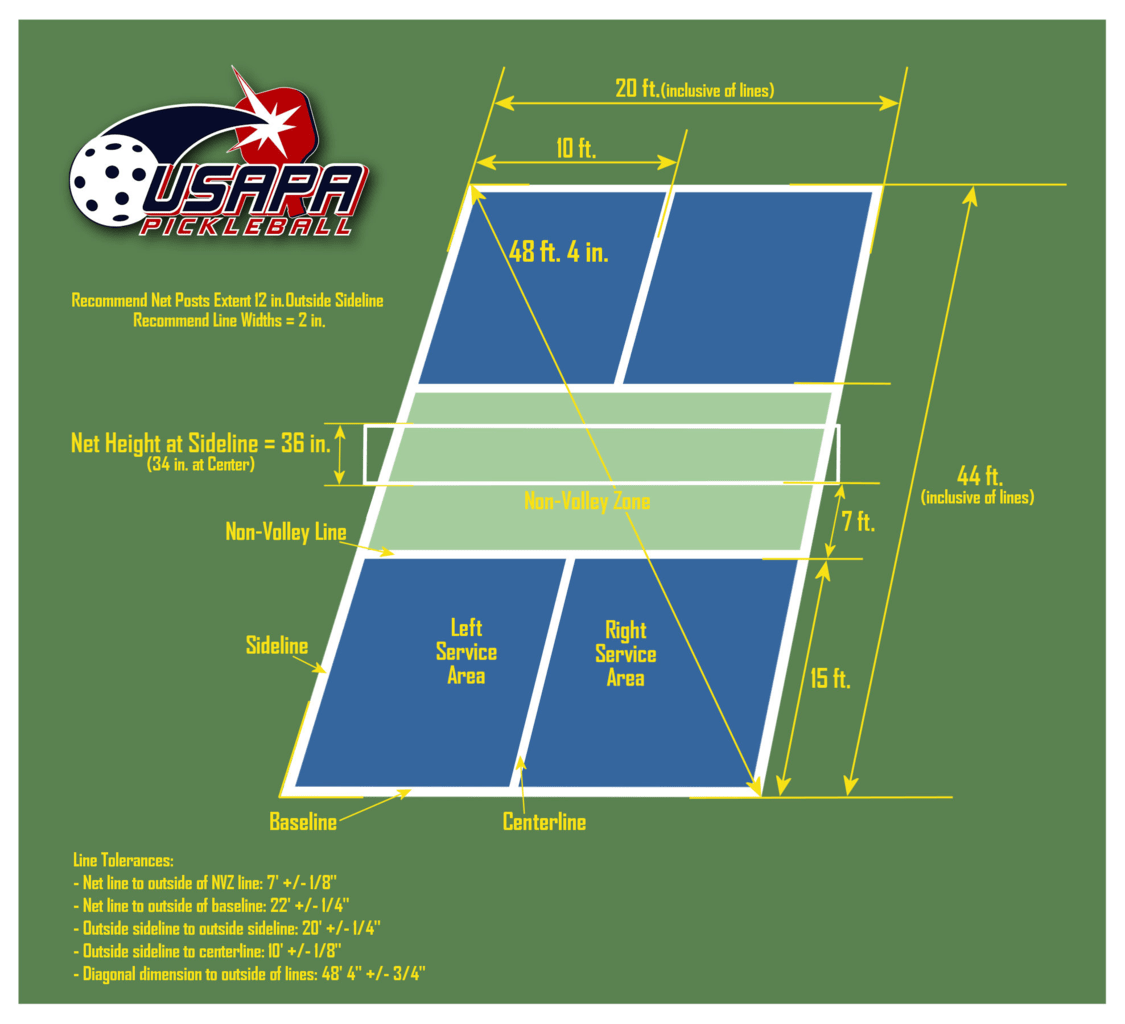
3. Six Key Considerations for Building a Pickleball Court
Building your own pickleball court requires careful planning and consideration of various factors. Here are six key considerations to keep in mind:
3.1. Available Space
Before you start building a pickleball court, assess the available space in your yard or facility. Make sure you have enough space to accommodate a court of the regulation size.
3.2. Surface Material
Decide on the type of surface material you want for your court. Common options include asphalt, concrete, or even a synthetic turf surface. Each material has its own advantages and considerations.
3.3. Drainage and Slope
Ensure that your court has proper drainage to prevent water buildup, which can make the surface slippery and unsafe. Additionally, consider the slope of the court to facilitate proper water runoff.

4. Frequently Asked Questions (FAQs)
4.1. Can I modify the court dimensions?
While it's best to adhere to the regulation size, you can modify the dimensions slightly to fit your available space. However, keep in mind that altering the dimensions may affect the gameplay and fairness of the game.
4.2. What should I do if my court is not regulation size?
If your court is not of the regulation size, you can consider using temporary boundaries or lines to mark the correct dimensions for gameplay. This way, you can still enjoy playing pickleball with friends and family.
4.3. Are there different court sizes for different age groups?
The regulation court size applies to all age groups. It ensures consistency and fair play regardless of the players' age or skill level.
By following the regulations and guidelines mentioned above, you can create a pickleball court that meets the standards and provides an enjoyable playing experience. Always remember to prioritize safety and consider the environment before starting any construction project.
Pickleball Court Dimensions Guide - What Is The Size Of A Pickleball
 Image Source : racquetsportscenter.com
Image Source : racquetsportscenter.com pickleball
Sandy Pickle Rules - Pickleball Comparison - SandyPickle.com
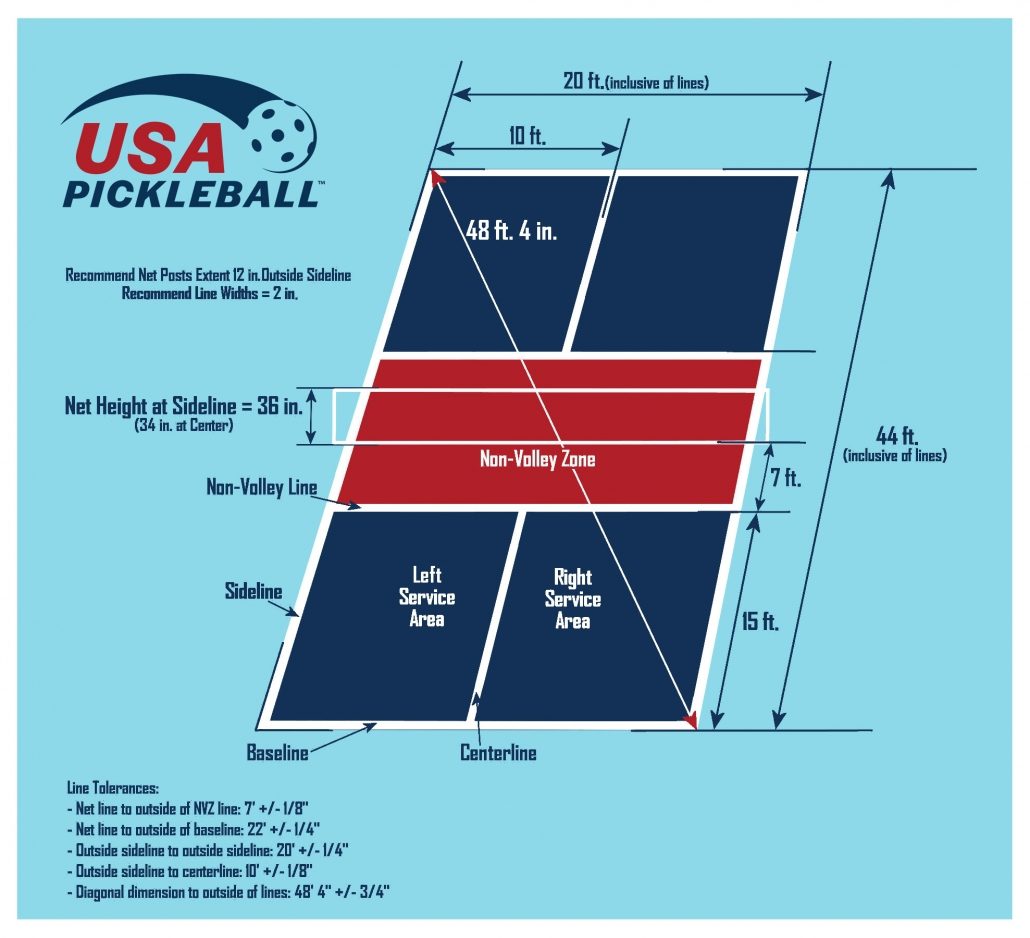 Image Source : www.sandypickle.com
Image Source : www.sandypickle.com pickleball pickle courts adjusted accommodate
How To Build An Outdoor Pickleball Court Anywhere - Ultimate Guide!
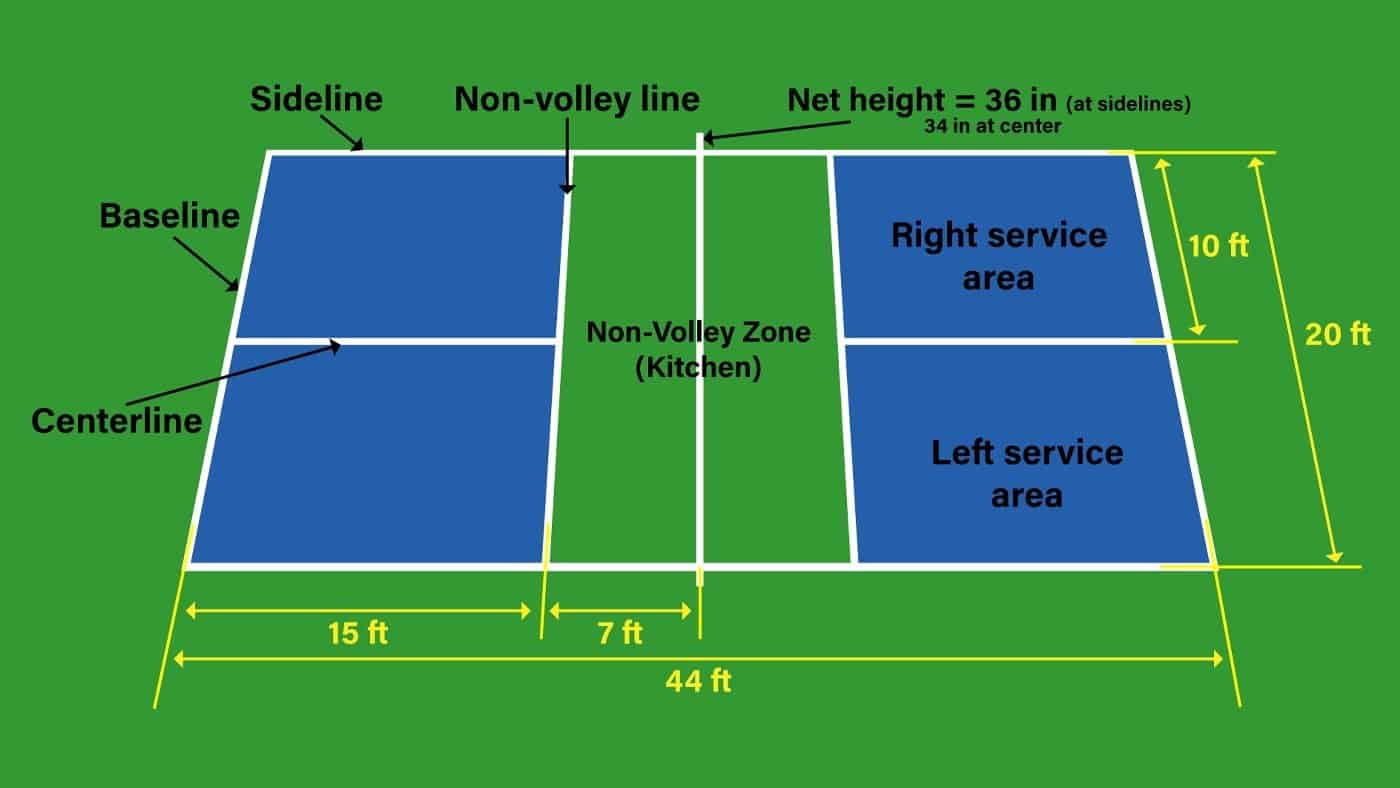 Image Source : www.pickypickleball.com
Image Source : www.pickypickleball.com pickleball lighting badminton resurfacing
Indoor Pickleball Court Size : How To Build An Outdoor Pickleball Court
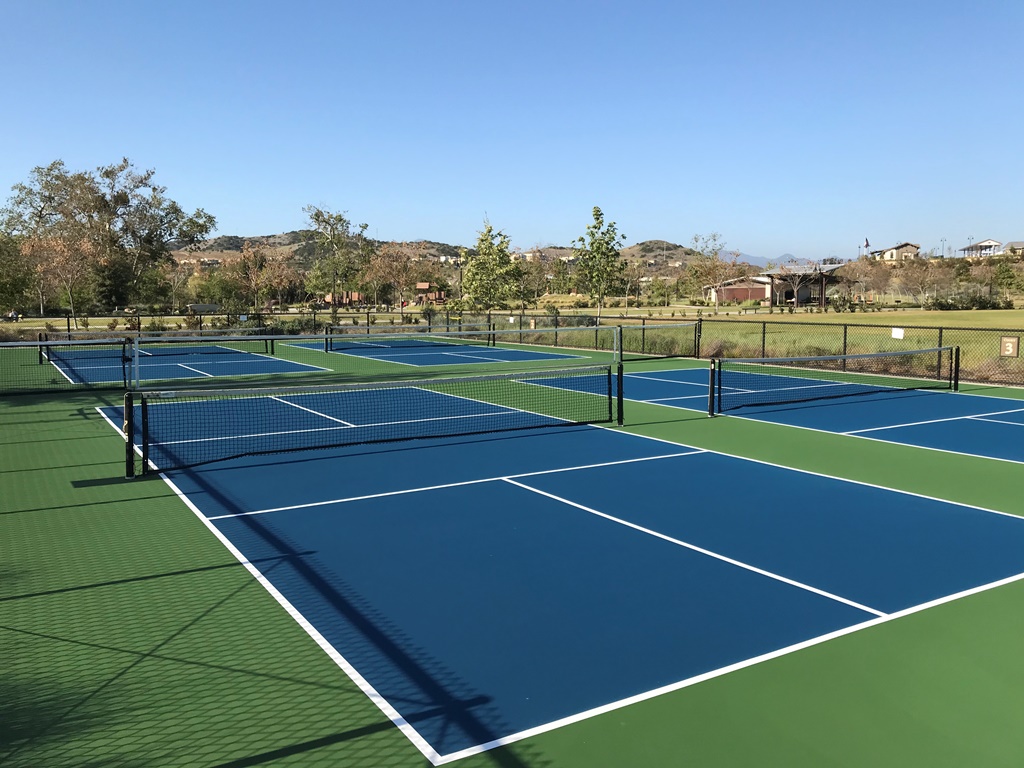 Image Source : jangambarangsem.blogspot.com
Image Source : jangambarangsem.blogspot.com pickleball courts sportmaster converting definitive
How To Play Pickleball - Court Dimensions, Rules, Basic Strategies
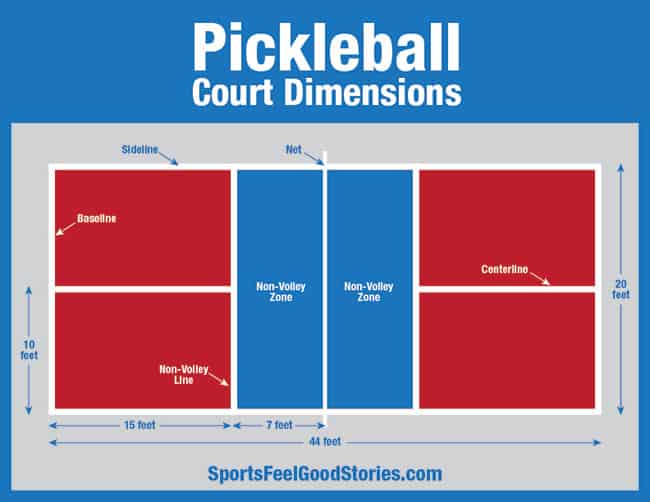 Image Source : www.sportsfeelgoodstories.com
Image Source : www.sportsfeelgoodstories.com 6 Things To Know Before Building A Pickleball Court
 Image Source : www.byrneandjones.com
Image Source : www.byrneandjones.com pickleball volleyball regulation backyard surface before know sportycious volley same clearly contrasting
Pickleball Court Dimensions | Pickleballin
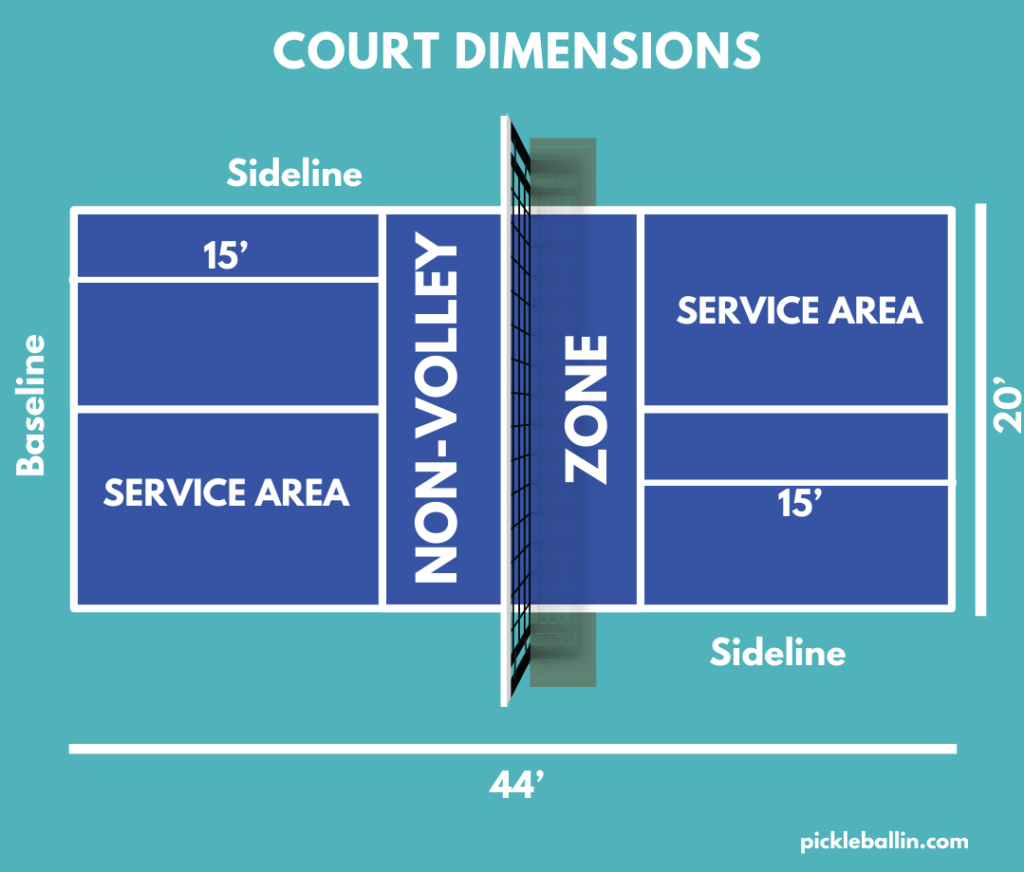 Image Source : pickleballin.com
Image Source : pickleballin.com pickleball courts
Full Size Pickleball Court 60'x30' | Court Surfaces
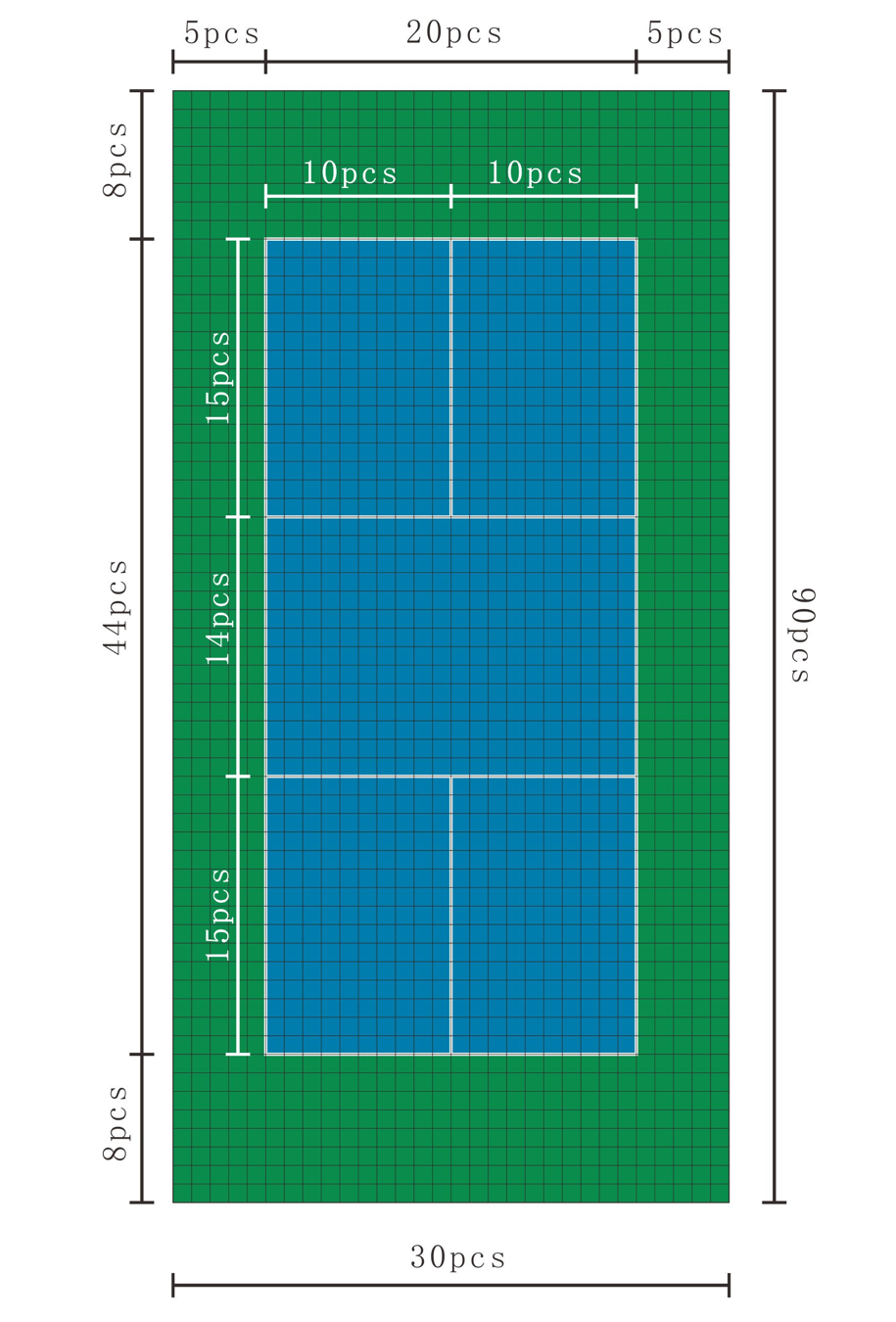 Image Source : courtsurfacesfla.com
Image Source : courtsurfacesfla.com pickleball court size diagram regulation supplies
Pickleball volleyball regulation backyard surface before know sportycious volley same clearly contrasting. How to build an outdoor pickleball court anywhere. Pickleball lighting badminton resurfacing. 6 things to know before building a pickleball court. Sandy pickle rules